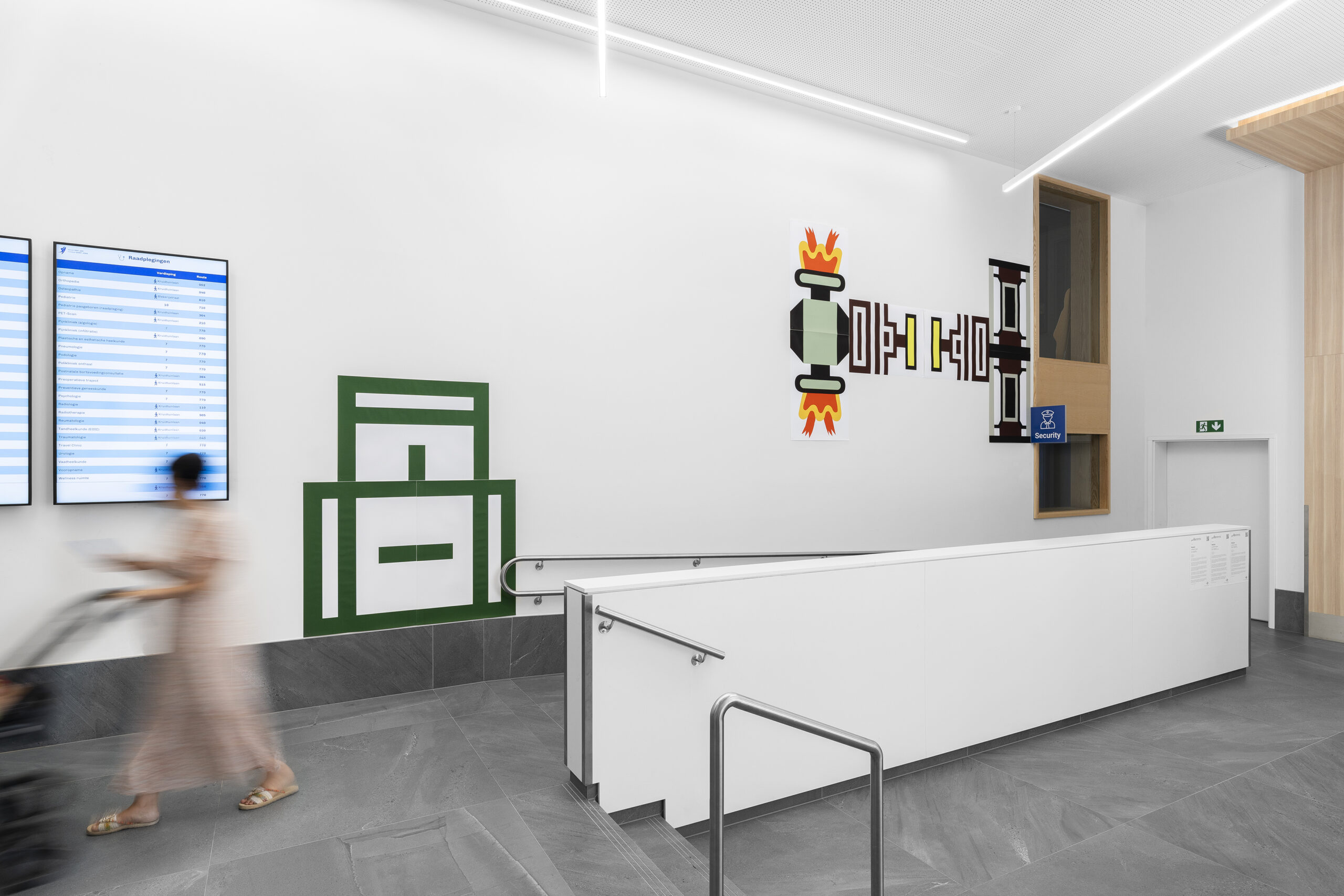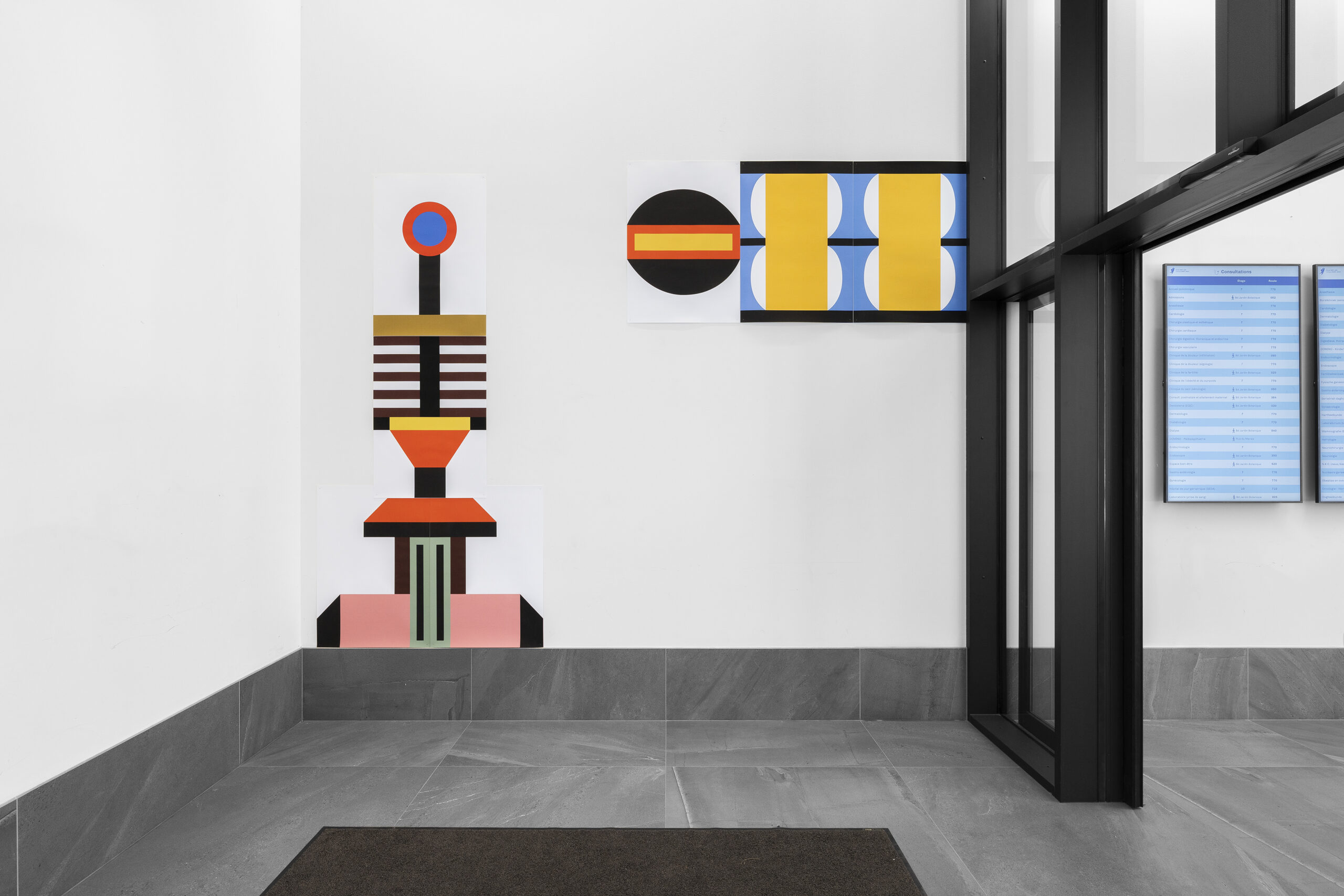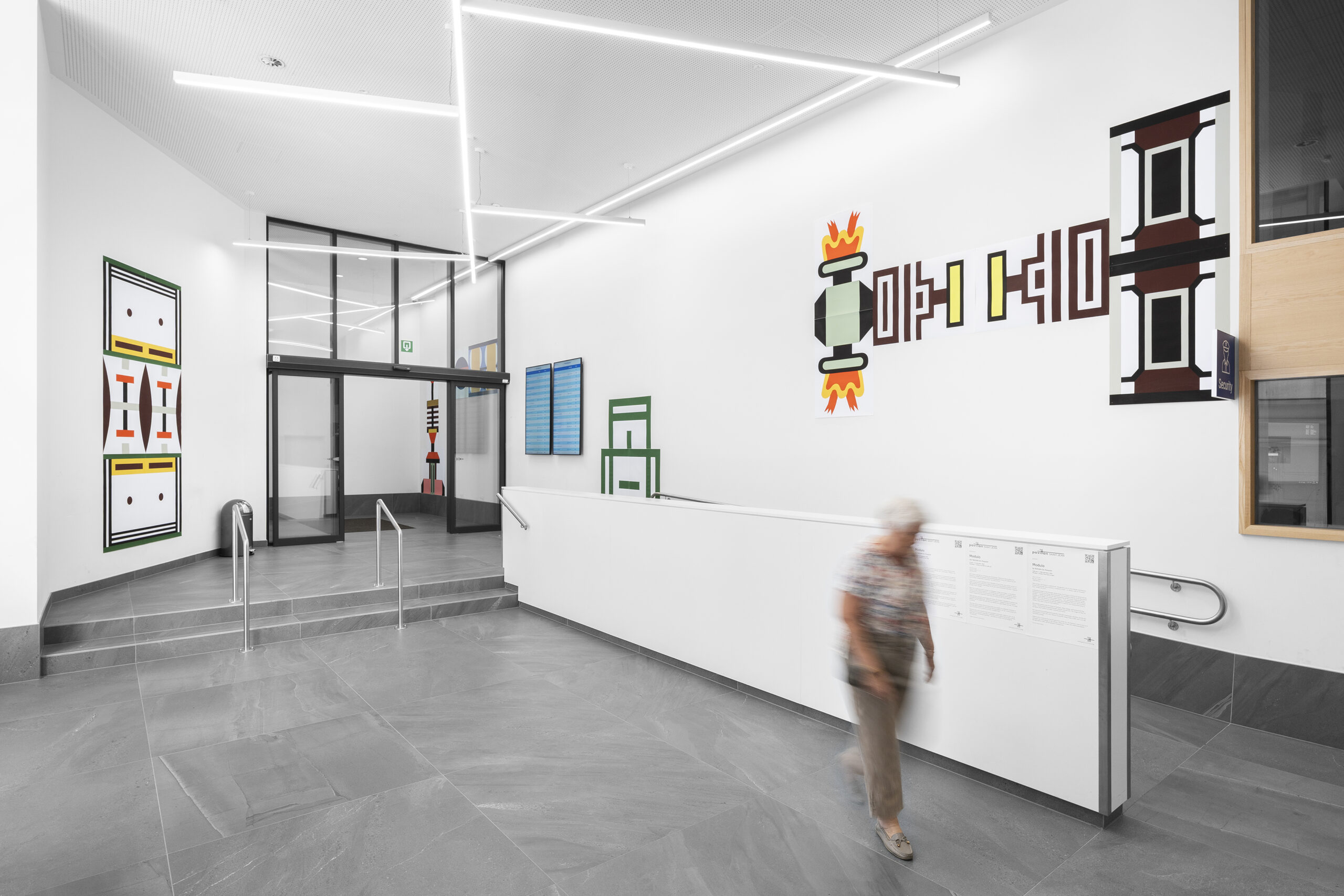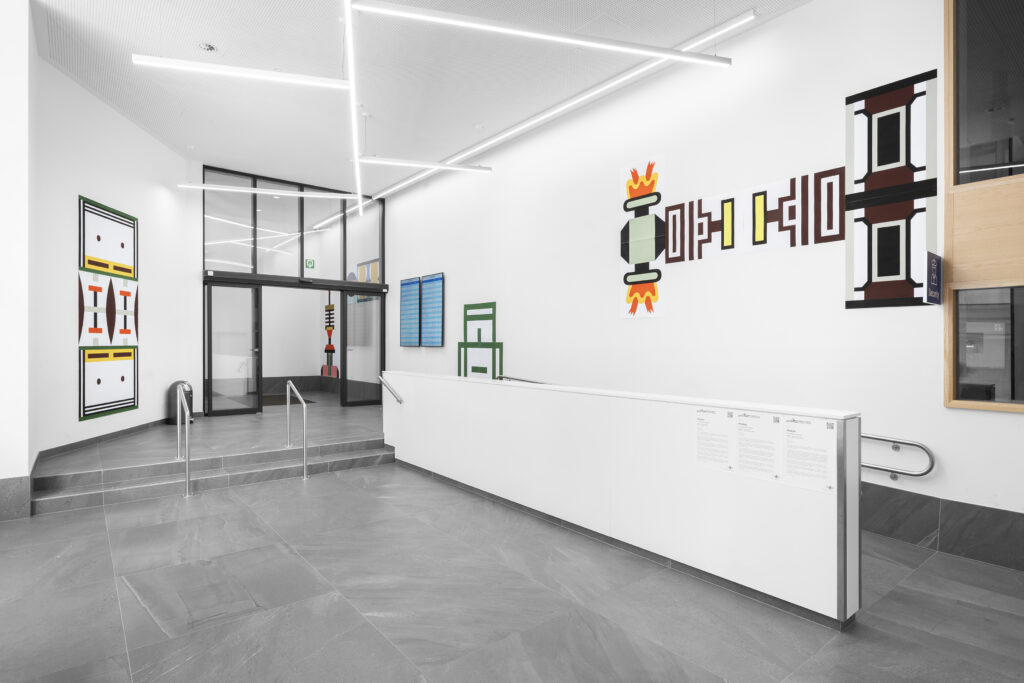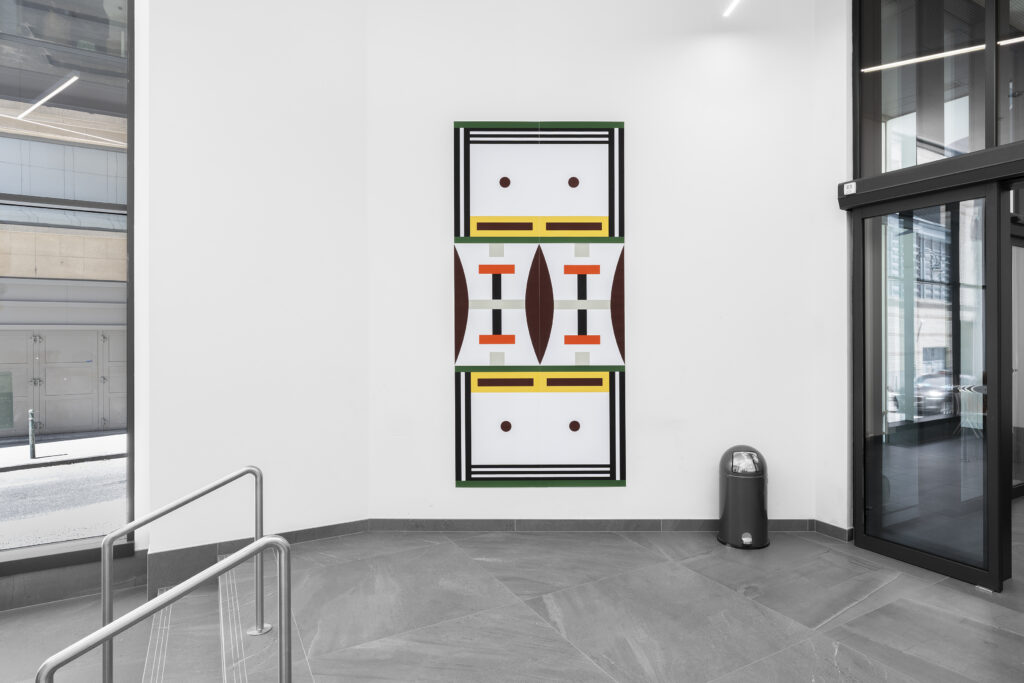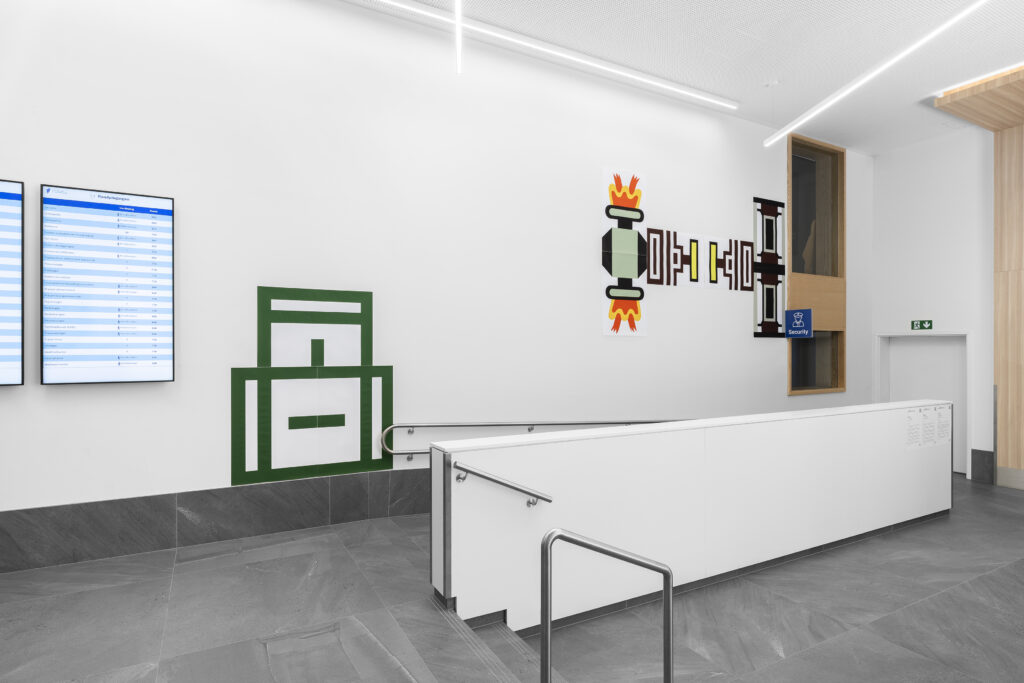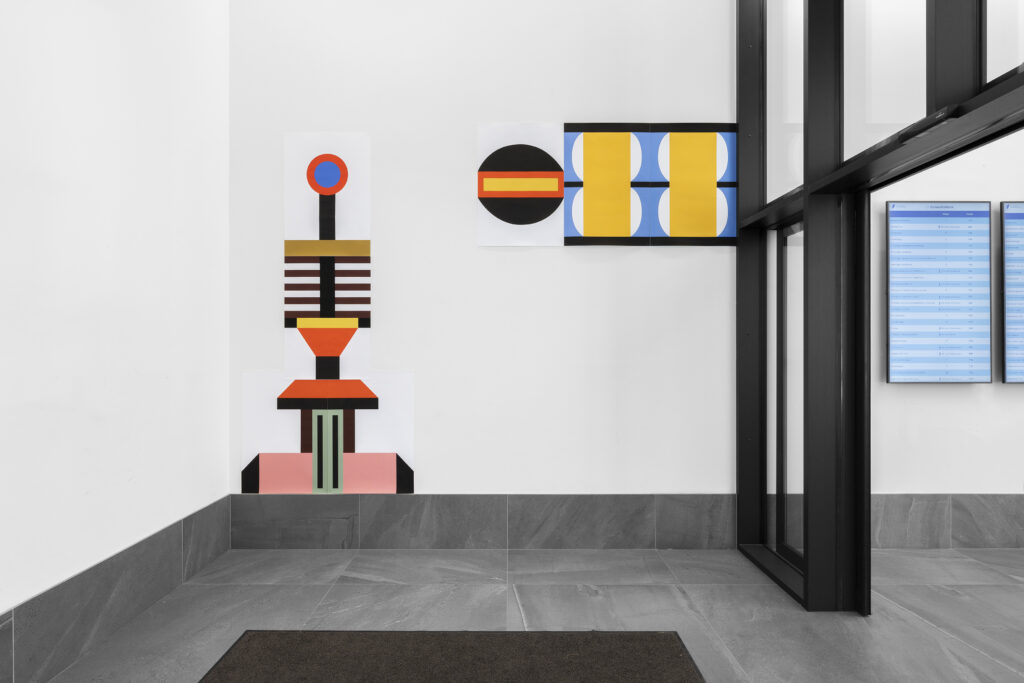This summer, the hospital is transformed. Through the work of artist Nathalie Du Pasquier, its three-dimensional space becomes a sculpture in itself—a vibrant, walk-in “Construction” of form and color.
A founding member of the Memphis design group, Du Pasquier is known for dissolving the boundaries between art, design, and architecture. Her installation features vivid inkjet prints on paper—images that blur the line between painting and decoration, original and copy.
Drawing on the shapes of everyday, useful objects—now reimagined as playful, abstract motifs—her work introduces a visual language full of lightness, curiosity, and invention. While medical environments are typically shaped by function, her compositions bring in rhythm, color, and a sense of visual openness.
Her modular patterns echo the forms of machines, urban signage, and architectural fragments—distilled and reimagined through a playful, abstract lens. The images are flat, but not digital: their surfaces are matte, saturated, and tactile.
Her interventions recalibrate functional space through composition, repetition, and the physical presence of form and color. Patterns accumulate, shapes align or shift, and a new spatial rhythm emerges.
Influenced by constructivism and the geometries of the city, Du Pasquier’s work invites us to reimagine our surroundings. In this setting, it offers not escape, but a shift in perception—through pattern, scale, and the presence of abstraction.
– Text by Assunta Ruocco –
Biography
Nathalie Du Pasquier (*1957 in Bordeaux, France) was a founder of the Memphis Group, an Italian design and architecture group within which she worked until 1986. She has exhibited in international group exhibitions, including at Museum Haus Konstruktiv, Zurich (2022); Palais de Tokyo, Paris (2019); Le Consortium, Dijon (2018) and Museo José Luis Cuevas, Ciudad de México (2007). Her works have been the subject of solo exhibitions at Portikus Frankfurt (2024); Kunsthal Aarhus (2023); MACRO – Museum of Contemporary Art, Rome (2021); MRAC – Musée régional d’art contemporain, Sérignan (2022); GfZK – Museum für Zeitgenössische Kunst, Leipzig (2019), MGLC – The International Centre of Graphic Arts, Ljubljana (2019), Camden Arts Centre, London (2017), Institute of Contemporary Art, Philadelphia (2017), among others.
